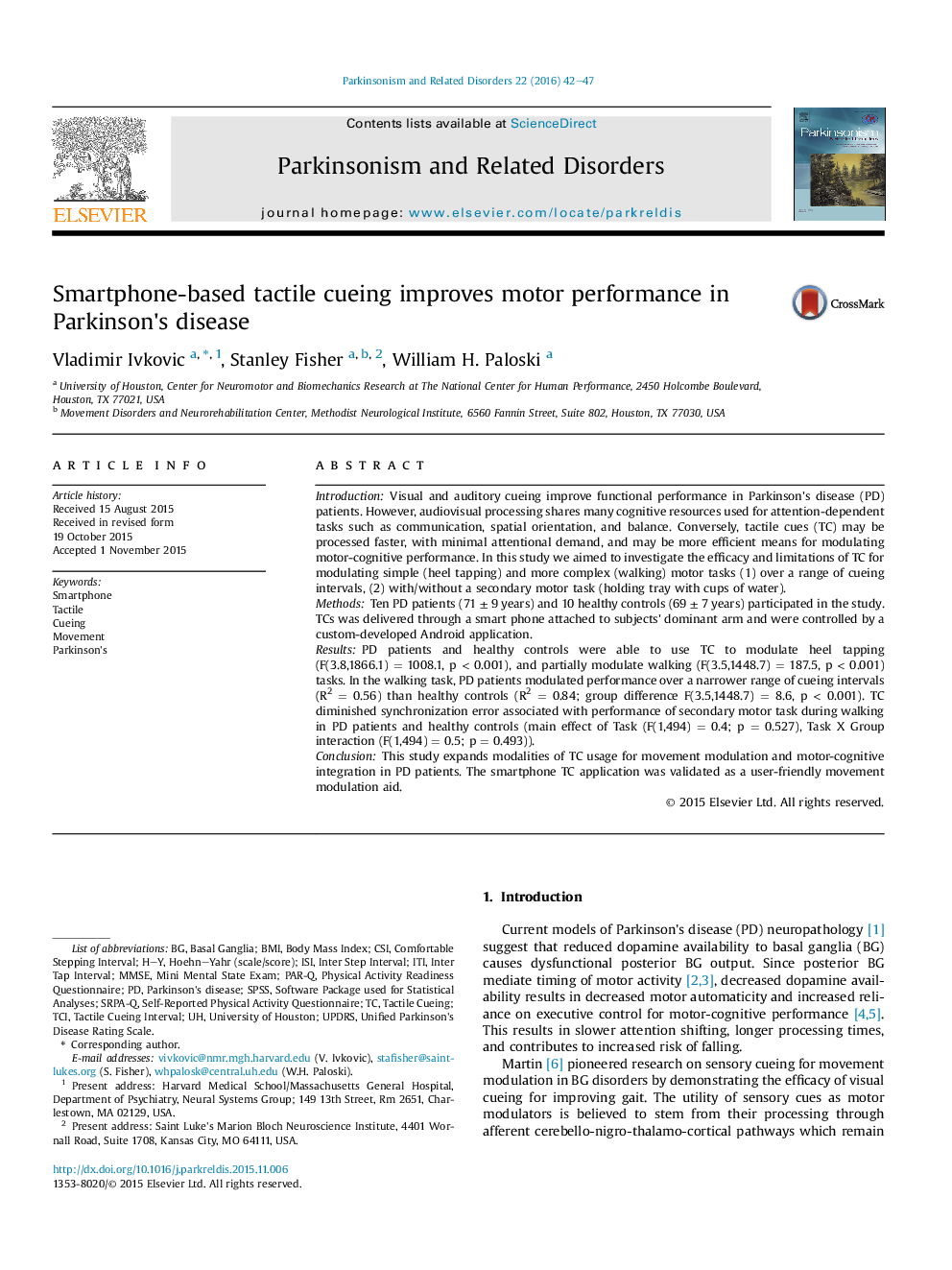| Article ID | Journal | Published Year | Pages | File Type |
|---|---|---|---|---|
| 1920462 | Parkinsonism & Related Disorders | 2016 | 6 Pages |
•PD and healthy controls modulated heel tapping and walking in response to TC.•Healthy controls modulated walking at slower, comfortable, and 10% faster pace.•PD patients modulated walking at slower and comfortable pace.•Secondary motor task slowed down cued heel tapping, but not walking.•TC effectiveness in increasingly challenging tasks warrants further investigation.
IntroductionVisual and auditory cueing improve functional performance in Parkinson's disease (PD) patients. However, audiovisual processing shares many cognitive resources used for attention-dependent tasks such as communication, spatial orientation, and balance. Conversely, tactile cues (TC) may be processed faster, with minimal attentional demand, and may be more efficient means for modulating motor-cognitive performance. In this study we aimed to investigate the efficacy and limitations of TC for modulating simple (heel tapping) and more complex (walking) motor tasks (1) over a range of cueing intervals, (2) with/without a secondary motor task (holding tray with cups of water).MethodsTen PD patients (71 ± 9 years) and 10 healthy controls (69 ± 7 years) participated in the study. TCs was delivered through a smart phone attached to subjects' dominant arm and were controlled by a custom-developed Android application.ResultsPD patients and healthy controls were able to use TC to modulate heel tapping (F(3.8,1866.1) = 1008.1, p < 0.001), and partially modulate walking (F(3.5,1448.7) = 187.5, p < 0.001) tasks. In the walking task, PD patients modulated performance over a narrower range of cueing intervals (R2 = 0.56) than healthy controls (R2 = 0.84; group difference F(3.5,1448.7) = 8.6, p < 0.001). TC diminished synchronization error associated with performance of secondary motor task during walking in PD patients and healthy controls (main effect of Task (F(1,494) = 0.4; p = 0.527), Task X Group interaction (F(1,494) = 0.5; p = 0.493)).ConclusionThis study expands modalities of TC usage for movement modulation and motor-cognitive integration in PD patients. The smartphone TC application was validated as a user-friendly movement modulation aid.
